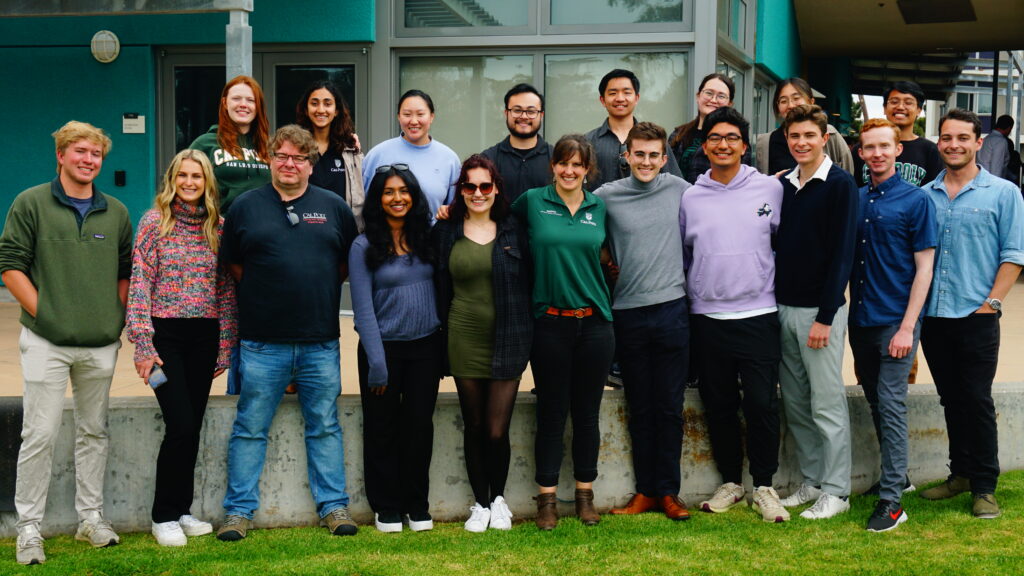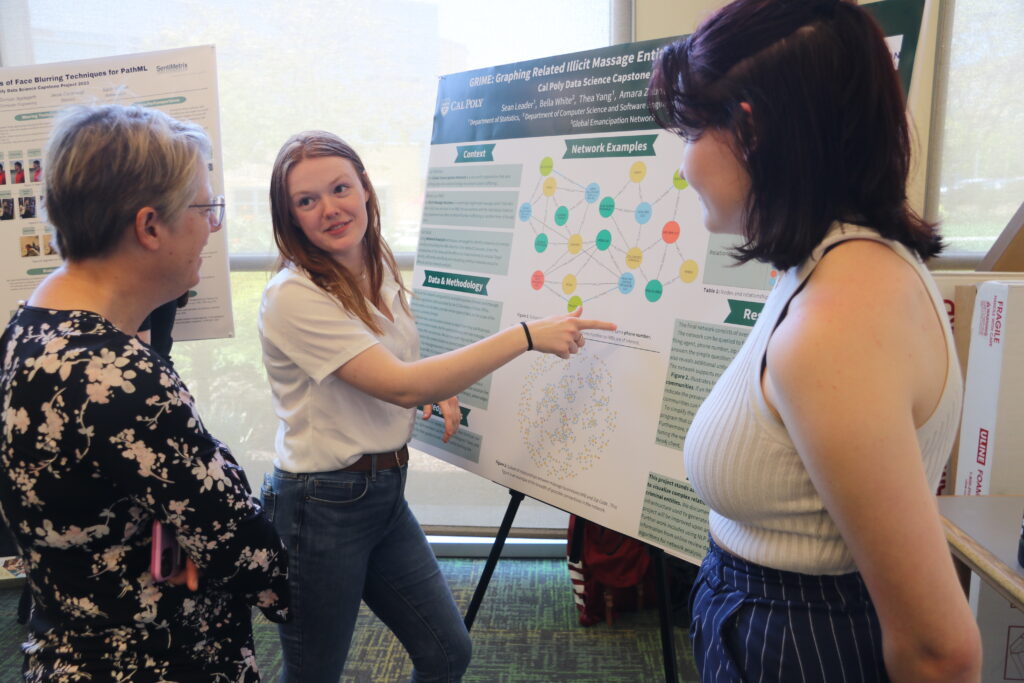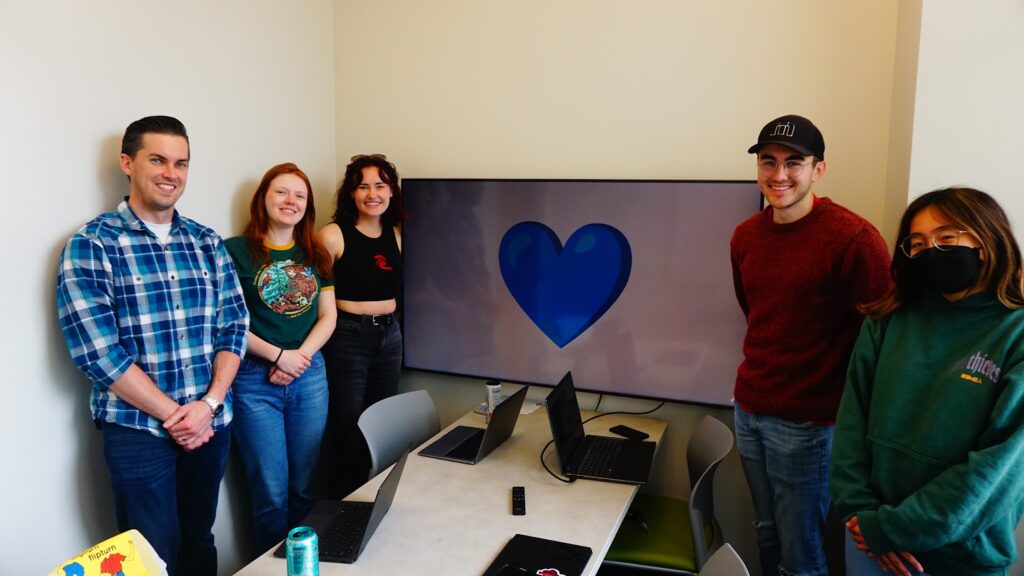Groundbreaking Data Science Project Empowers Global Fight Against Human Trafficking
Content warning: This story discusses sex trafficking

Organizations combatting human trafficking are using a powerful new network built by a team of Cal Poly students in the data science capstone that uncovers connections between co-conspirators to identify businesses engaged in a modern form of slavery.
“Anti-trafficking stakeholders at home and abroad have seen this system and now are taking action,” said Sherrie Caltagirone, executive director and founder of the Global Emancipation Network, or GEN, a nonprofit dedicated to disrupting human trafficking.
She met the team – a computer science student and three statistics students – through the Cross-Disciplinary Studies Minor in Data Science program led by Computer Science Professor Alex Dekhtyar and Statistics Professor Hunter Glanz. In the 20-week capstone, students are paired with a professional client to solve a real-world problem.
Caltagirone’s team took on the challenge of building and training a network with data from massage businesses in Colorado that could help agencies and law enforcement find illicit operations – the No. 1 face of sex trafficking, according to Caltagirone.
Soon after the team presented GEN with the code, she took the network to officials at the California Department of Justice, stakeholders in Texas and law enforcement officers across the United Kingdom.
“This system allows stakeholders to access data in a new way, and they already are seeing results,” she said, pointing to an undisclosed investigation in California where the data is playing a significant role.
Professors Dekhtyar and Glanz formed the team of students eager to help the Global Emancipation Network disrupt the trafficking organizations that exploit 21 million men, women and children each year.
“I wanted to play a part in dismantling the networks behind human trafficking,” said member Bella White, a blended master’s student in computer science. “If we are spending two quarters on this project, why not try to make a really big impact?”

Cal Poly student Bella White shows Dean Amy S. Fleischer how their capstone team built a social network graph to find connections between illicit massage businesses and those that look legitimate to aid law enforcement in the fight against human trafficking. Photo by Dennis Steers
Other members included statistics majors Sean Leader, Thea Yang and Amara Zabback.
Caltagirone has partnered with the data science program since the start, integrating information students collect with her nonprofit’s data that is shared free of charge with law enforcement, government agencies, researchers, academia and anti-trafficking nonprofits.
She gave White, Leader, Yang and Zabback wide latitude to decide the direction on their project, with the group opting to build their network using data on massage businesses in Colorado.
“GEN had done the work of identifying illicit massage businesses, but our goal was to build a social network graph to find connections between operations that are illicit and those that look legit,” Zabback said. “If businesses had the same phone number, ZIP code or filing agent, we looked closer.”
They created a circle for each entity, then looked for lines they could draw between entities.
“In the beginning, we weren’t sure if we would find those connections,” said Thea Yang, who graduated in spring 2023. “We were acquiring data, cleaning and coding and then we began to find connections – meaningful insights that start to tell a story.”
The amount – and content – of the data the team had to process over the 20-week capstone required them to hone new skills in network analysis while mitigating the effects on their own mental health.
Zabback’s focus was natural language processing, which involved reading massage customers’ reviews on websites, including one that publishes reviews for illicit massage businesses offering sex services for sale.
“When I first started looking at these reviews, I had to stop after 5 to 10 minutes and step away,” she said. “This is a heavy topic I hadn’t been trained to digest, so I had to make sure I was taking care of myself.”
White, who was tasked with setting up the infrastructure to store the data, echoed Zabback.
“These sexual acts described in horrific, graphic details are real things that happened to real people, not just data points,” she said.
The team started with a basic understanding of human trafficking, but as they conducted their research, they gained a deeper understanding of the extensive and intricate operations involved in exploiting so many people.

Statistics Professor Hunter Glanz, from left, is with students Bella White, Amara Zabback, Sean Leader and Thea Yang. Glanz and computer science Professor Alex Dekhtyar advised the team as they worked with the Global Emancipation Network on a data science project to aid law enforcement and agencies fighting human trafficking. A blue heart represents solidarity with human trafficking victims.
